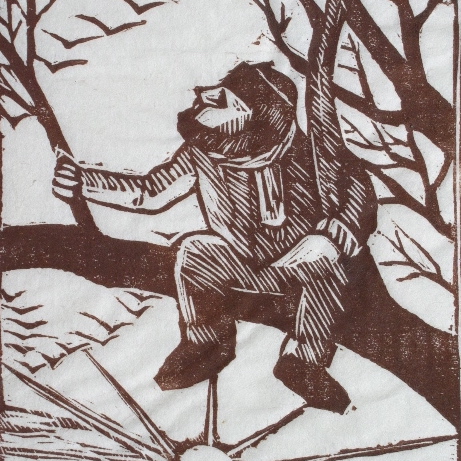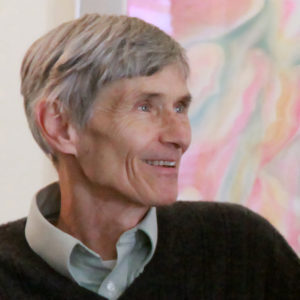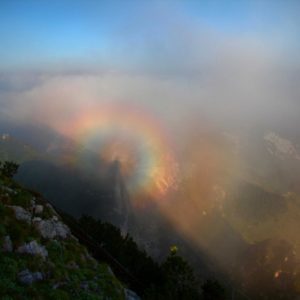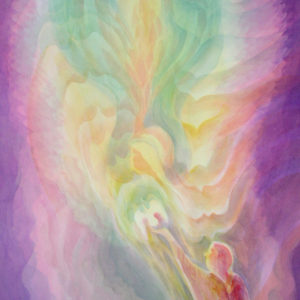Etheric Vision
By Dennis Klocek 6 min read
In the inner work of developing your consciousness, there is a stage of development called “etheric vision”. This concept is found in many forms in the work of Rudolf Steiner. To form an idea of this, it is useful to look at the work of Goethe known as phenomenology, or the perception of phenomena.

This essay attempts to answer the following questions:
- Is phenomenology etheric vision?
- What is the symptomatology of being conscious in the ether body?
- What does it mean to find oneself in the world?
- If I find myself in the world, to what does the phrase “inner life” refer?
- What does it mean to be outside of the body, or think “off of” the brain?
- What is living picture imagination?
The etheric or life realm has a foundation in the shifting form patterns of organic development. Leaf follows leaf, mountain leads to valley, cloud follows cloud in organized sequences. Goethe recognized these patterns and their relationships and built a whole science of observation on them. The work of establishing a phenomenological science led Goethe to the foundations of nature. It does not however automatically lead to the discovery of self in the world or what we could call etheric vision. For this to happen some sort of meditative focus is necessary along with the work with the phenomena of nature.
Fundamentally there are two stages of this work. The first stage involves controlling your attention when you are having a sensory experience. There are several levels of this. A simple exercise that contains all of the levels is called, “entering into the spirit of the place”.
In a natural setting find a place that is unknown to you and sit down in a comfortable position. Direct your attention to a circle around you that is only three feet across. At first, there will be very little recognition going on because you are still “arriving” there. When your mind settles down pay attention to the first detail of your surroundings that attracts your attention. Make a mental note of the detail and then try to clear your mind of any thoughts related to the detail or the exercise. Sooner or later another detail of your immediate surroundings will arouse your interest. Note this detail and then once again clear your mind. A third time a feature of your immediate surroundings will rise into your consciousness. This time pay attention to what is interesting to you. This third feature will be treated as seed for the rest of the work, or in alchemical language, a kind of “earth”.
To an alchemist, the emergence of a particular detail out of a ground of details is the characteristic of the stage of consciousness known as “earth”. Earth consciousness is the foundation that can serve to support higher vision. In it, you practice controlling your attention until you can realize just when a new sensation breaks into your field of consciousness. This is an “earthing” or settling of the normal flow of uncognized images in the memory. By making a conscious effort to recognize when a new sensation arises in the consciousness you help your attention to become focalized by your will. This is the first step in transforming your imagination into a creative tool.
The next step is to train your attention to flow along what could be called the lines of emergence of the phenomenon. To do this you need to take the earth stage of consciousness a stage higher. To do this return to the same spot as the first exercise. This time expand your attention to a circle about ten feet in diameter. Like the first exercise, clear your mind and watch for something in the field of vision to impress itself on your attentive consciousness. Notice the first detail and then clear your mind. Notice the second detail that draws your attention and then clear your mind. Notice the third detail that arises in your attention. Hold that image in your mind’s eye. Then dissolve that image and recall the third image of the previous session. Then dissolve that detail and sit in silence. In a journal, record what both the first and second detail were.
To an alchemist, this stage of returning to the same spot at a different time involves the dimension of time in a dynamic way. The inclusion of time into the process moves the attention away from the details themselves and starts to link the consciousness in the perception of what an alchemist would call “water”. We might call it the flow of the consciousness between events and sensations. To include the first and second times as part of the process you push your consciousness into what esotericists call the “etheric or life consciousness”. Life changes details by expanding individual events into a flowing set of developing relationships. Rocks crumble, plants grow, clouds change, and organs function in ever-developing sets of relationships and functions. When you return to the same site and perform the same observational modality the repetition expands your consciousness into the living dimension of the space that you are in. That is why it if lawful to expand your circle of attention to ten feet instead of the original three feet. You can still see details of things at ten feet but there is a border that is established where details no longer can apply and you must shift your consciousness to a more fluid mode.
This meditative work is necessary to develop a kind of thinking that is not dependent upon memories of sense experiences. This type of thinking is called sense-free thinking. It is not possible to develop sense-free thinking by looking at plants or clouds. It is possible to develop sense-free thinking by first strengthening the inner picture forming capacity by controlling the production of inner picture forming processes. This is done by paying attention to which sense enters consciously into the realm of the archetypes that stand behind the forms in nature. Goethe moved in this direction when he found the technique of exact sense perception. In this technique, the conscious holding of inner images of plant metamorphosis is practiced. This puts the soul in the domain of etheric vision but not in the place where we are working on the vision process itself. To consciously work the vision processes of the etheric it is necessary to establish a consciousness that can track etheric motion phenomena in the place where images are no longer present. In this silent place, the noun-like nature of the phenomenon is perceived as verb-like. The inner image is no longer a thing but a becoming. Goethe was enthused about the realm of the becomings in nature and could enter into it in an imaginative way, but his rigor as a scientist did not allow him to step out of the flow of the imaginations and perceive the motions of the becoming directly as differing qualities of movement.
The symptomatology of being conscious in the etheric body is the perception of flowing images, each one morphing into the next. This symptomatology is characteristic of being within etheric vision but not having the capacity of etheric vision. That is, we can participate in etheric vision but not understand it or are not able to direct it. It is similar to asking, does the fish know it is in the water? Do we know we are in the spirit?
When we are in etheric vision, we do not have the capacity to separate out from it. To separate out from the flow of the phenomena while simultaneously being “with” it is the ability to use our inner life to dampen down the inner images into a state of inner silence in which all memories and associations of sensory experience are left behind. In this totally silent realm, we begin to develop the inner fortitude to be able to stand the impact of seeing the etheric without inflation overwhelming the balance of the soul. Inflation is the feeling that we are “special” because we can see the etheric. This causes our sense of self to become “bigger”, hence inflation. Inflation of the soul results in distortion of our sense of reality. Great care must be taken with the results of etheric vision lest you invite unknown repercussions from the natural world.
For more on developing etheric vision in a safe way, please see the lecture “Developing Living Nature Thinking“.

Dennis Klocek
Dennis Klocek, MFA, is co-founder of the Coros Institute, an internationally renowned lecturer, and teacher. He is the author of nine books, including the newly released Colors of the Soul; Esoteric Physiology and also Sacred Agriculture: The Alchemy of Biodynamics. He regularly shares his alchemical, spiritual, and scientific insights at soilsoulandspirit.com.
1 Comments
Leave a Comment
Similar Writings
Colors of the Sunrise: Light, Darkness and the Atmospheric Dance of the Soul
[Republished from the Journal of Anthroposophical Medicine Vol.9 1992] From a mechanical point of view the motion of the earth as it revolves around its axis brings into being the diverse set of phenomena known as the sunrise. From a more poetic point of view the sunrise is a rune of high significance for human…


Thanks you so much Dennis and Ben for sharing this ; so precious and deeply touching / awakening words. Forever thankful. Love Peter